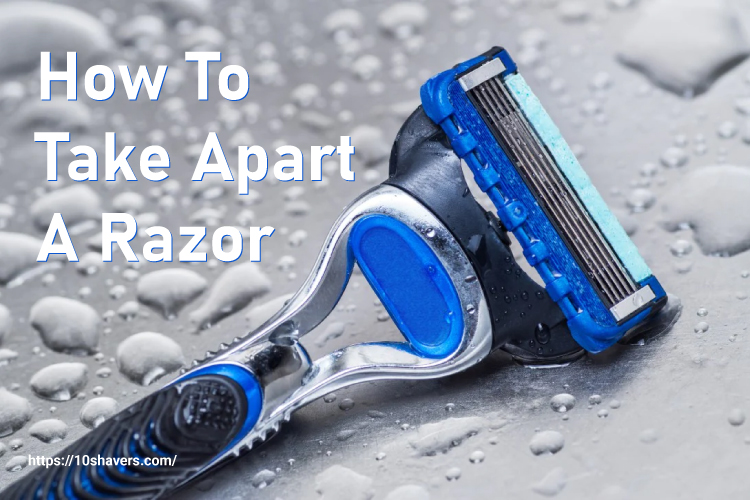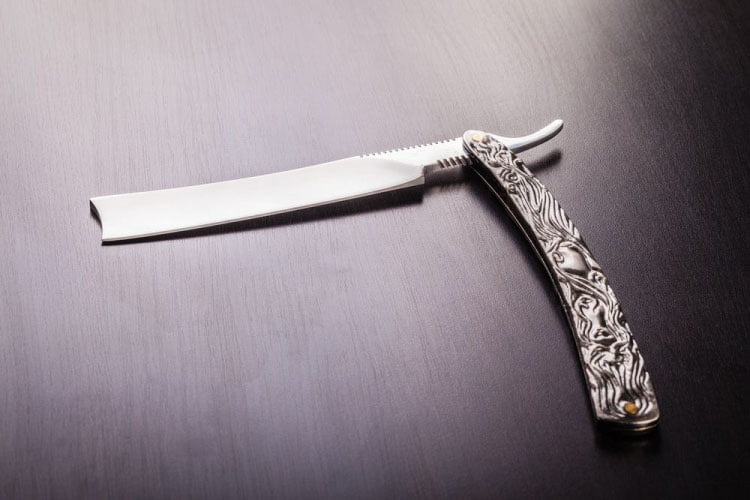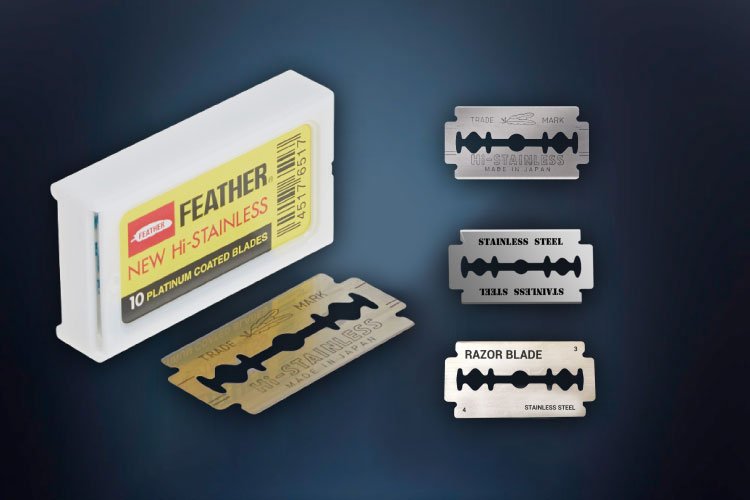Last Updated on January 2, 2023 by Cale Boyer
Are you curious about how to take apart a razor? If so, then this step-by-step guide is for you! It will provide detailed instructions on how to get the blade out of a razor and help you understand the process thoroughly.
Whether you’re trying to clean or replace your razor blade, this guide will ensure that it’s done correctly. With its helpful tips and tricks, we’ll walk you through each step of taking apart a razor safely and effectively. So, let’s get started!
Prepare The Materials Needed For Taking Apart A Razor
Taking apart a razor requires careful handling and preparation of the necessary tools. It’s important to ensure that you have all the right materials before beginning and an understanding of how to remove the blade. With the proper equipment and knowledge, taking apart a disposable razor can be done quickly and safely.
The first step in taking apart a razor is to gather the necessary tools. For better grip and control, you will need a pair of needle nose pliers, preferably with rubber-coated handles. Additionally, depending on the fastener used to hold the blade, you’ll need an appropriately sized screwdriver or hex wrench set. Finally, you’ll need a pair of safety glasses to protect your eyes from any metal shards that may be produced during the process.
Identify The Parts Of Your Razor
Taking apart a razor and understanding how its parts work together is a task that requires time and patience. Regardless of the type of razor, it comprises a few basic parts: handle, guard, cap, blade, and body. It’s important to familiarize yourself with these components before attempting disassembly.
The handle is the part of the razor that you hold in your hand. It is often textured for a better grip and may have ridges or grooves for comfort. The guard is the part that keeps the blade away from your skin when shaving.
It is usually made of metal and has several prongs on one end to secure the blade onto it. The cap is a piece of plastic or metal that covers the blade. It helps to keep it protected and prevents any accidental cuts.
The blade is the main component of the razor and typically has three or more edges on each side. The body is often made from stainless steel or titanium and connects all components. It holds everything in place and keeps the blade secure.
How To Take Apart A Razor?
Razors come in many types and sizes, from vintage safety razors to modern electric ones. Taking apart a razor properly can be tricky, depending on the type of razor you are working with, and it is important to have the right tools and techniques to ensure it is done safely.
When taking apart a razor, it is first important to identify the type of razor you are taking apart. If it is an old safety razor, for example, it may require a special tool such as a screwdriver or pliers to open. Depending on its design, an electric razor can be opened using either a flathead or a Phillips-head screwdriver. It is also helpful to have a pair of tweezers or needle-nose pliers for removing the blade from the razor head.
It is then important to remove any screws holding the razor together. Safety razors are usually on either side of the handle and can be unscrewed with a screwdriver. The screws may be on either side of the head for electric razors and can typically be unscrewed with a Phillips-head screwdriver.
Disassemble The Handle From The Blade Guard
Taking apart your razor is a great way to extend its life and ensure that it performs optimally. Knowing how to disassemble the razor handle from the blade guard properly is an essential skill for any shaver. This guide will walk you through the steps necessary to take apart your razor.
Begin by unscrewing the handle from the blade guard. This should be easy to do with your fingers, but if you find it difficult, use a flathead screwdriver for extra leverage. With the handle removed, you can see how the razor is constructed.
The next step in taking apart a razor is to remove the blade guard and spring. This is done by pushing the blade guard down slightly with your finger while at the same time pulling the spring up. Once this is completed, carefully lift the entire blade assembly and place it aside.
At this point, you can begin to see how the razor is designed and constructed. Other pieces and parts may need to be removed before you can access the blade. If there are, carefully unscrew them, using a flathead screwdriver if necessary.
Take Out The Blade Carefully Using A Pair Of Tweezers Or Pliers
Taking apart a razor can be tricky and requires careful attention to detail and safety. But with the right tools and knowledge, anyone can easily learn how to do it. The first step is to get the blade out of the razor. This process should be done with caution since there is a risk of injury with the sharp blade.
You will need a pair of tweezers or pliers to get the blade out. Start by carefully placing one end of the tweezers around the blade embedded in the razor handle. Make sure to grip it firmly without applying too much pressure since this could cause damage to the metal parts. Once you’ve securely attached the tweezers to the blade, slowly pull it out from the handle.
Once you have removed the blade from the razor handle, place it in a safe area away from children and pets. This will ensure that no one gets hurt by accidentally touching or playing with it.
Clean Up Each Part Thoroughly
Cleanup is essential to taking apart a razor and ensuring its longevity. After each step in the disassembly process, all components should be cleaned thoroughly with warm, soapy water to prevent rusting. This will help to maintain the razor’s function and keep it looking its best for years to come.
Before starting, ensure the necessary supplies, such as warm water, a soft cloth or sponge, and mild soap. Once these items are gathered, carefully dip the components of the razor into the warm soapy water and use a damp cloth or sponge to clean each piece gently. Make sure to pay special attention to any metal pieces that may be present on the razor, as these are the most susceptible to rusting.
Once all the parts have been cleaned thoroughly, carefully inspect them for any signs of damage or rust. If you find any evidence of corrosion, take extra precautions and use a soft brush to scrub away any oxidation that may be present on the razor’s components. Afterward, rinse the pieces off with warm water and make sure to dry them completely.
In addition to cleaning each part of the razor, it is important to lubricate any metal components that are present. This will help prevent further corrosion while protecting against wear and tear. A light coat of oil or moisturize petroleum jelly should be applied after each cleaning, followed by a thorough dry-off with a soft, lint-free cloth.
While taking apart and cleaning a razor may be time-consuming, it is an important step in preserving its function and lifespan. By following these simple steps regularly, you can ensure that your razor will continue to work properly and give you years of use.
Put All Components Back Together In Reverse Order
Taking apart a razor can be a daunting task, but it is often necessary due to the regular wear and tear of the device. Putting all components back together in reverse order is an important part of reassembling your razor so that it works properly. This process requires patience, attention to detail, and safety precautions to ensure that the razor functions correctly.
The first step to putting the components of your razor back together is to begin by laying out all the pieces. This will provide a visual snapshot of which components go where and how they should fit together. Once each piece has been correctly identified, you can start assembling them reverse from how you took them apart. This means that the first piece you removed should be the last to be put back together.
When reassembling your razor, it is important to ensure that each component is secured properly for the device to work correctly. If a piece is not securely attached, it may come loose during regular use of the razor and can lead to injury. To ensure that all pieces are held in place, use a Phillips or flathead screwdriver to tighten any screws. If the razor has no screws, you can use adhesive or glue to secure the components.
When putting all of the components of your razor back together in reverse order, it is also important to ensure that the device is clean. This can be done by wiping down each part with a soft, damp cloth and mild detergent before placing it back in its proper location. This helps to remove dirt, dust, and other debris which could interfere with the razor’s ability to function correctly.
By putting all components back together in reverse order, you can ensure that your razor meets its full potential and gives you years of use. This process may require patience, but preserving the razor’s function and lifespan is important.
Test Shave Your Newly Assembled Razor
The next step is to test the blade’s efficacy. To do this, you should take a patch of skin on your arm and wet it thoroughly with warm water. With a steady hand, use the razor to make a few light strokes across the dampened skin to check how well it cuts. If the razor cuts too deeply and leaves behind a rough texture, it may be time to invest in a new blade.
After testing the blade’s efficiency, you should also test the razor’s handle. This involves taking a few strokes with your finger across the handle to check for any sharp edges or nicks that may have been created during assembly. If you feel any roughness, you must sand the handle until it is smooth.
Finally, once all these tests have been done and passed, you can wash your razor with warm water and antibacterial soap to remove any debris that may have been left behind during assembly. This ensures that the razor is clean for use and that you don’t contract any skin infections from the blade.
FAQs
- How Do I Safely Take Apart A Razor?
It’s important to be careful when taking apart a razor to avoid personal injury. First, make sure the blade is completely dry and clean. First, remove the blade from the razor’s handle, twist off, or bend back any plastic clips securing it.
For more intricate designs, you may need to use a tiny flathead screwdriver or small pliers to pry apart the two parts of your razor. Once separated, gently pull up on one end of the blade while pushing down on its other end until it slides out easily. Be sure to store and dispose of used blades safely afterward.
- What Tools Do I Need To Disassemble A Razor?
To disassemble a razor, you will need a pair of needle-nosed pliers, an eye screwdriver, or a small blade. First, hold the head of the razor in one hand and use the pointed end of the pliers to uncurl the metal guard that clamps around the blade.
Then unscrew any screws on each side of the head and carefully lift out any inner workings with your other hand. Finally, use an eye screwdriver or a small blade to pry up and slide out the old razor blades from their holder before inserting new ones.
- Is It Hard To Take Apart A Razor Blade?
No, it’s not hard to take apart a razor blade. The process involves unscrewing the handle from the head of the razor and removing the old blade from its chamber. Once you have done this, replace it with a new blade and screw the handle back on. Use forceps or other tools when handling razor blades to ensure you do not injure yourself.
- What Should I Do If The Blade Isn’t Coming Out Of The Handle?
If the blade isn’t coming out of the handle, you should check to ensure no obstructions prevent it from being released. If there isn’t any debris blocking it, gently tap the handle on a hard surface or use needle nose pliers to pull and twist on the blade until it is released.
Alternatively, if you have a pair of scissors with long enough blades, try wedging them between the handle and blade and twisting them apart. Taking apart razors that don’t release their blades easily takes patience and caution—you don’t want to break your razor in half while trying to get the blade out!
- Are There Special Considerations When Taking Apart An Electric Razor Versus Manual One?
Yes, there are some special considerations when taking apart an electric razor versus a manual one. It is important to ensure you unplug the razor before attempting to take it apart for electric razors. Additionally, using the appropriate tools for the job can help prevent damaging any internal parts of the razor during disassembly.
With manual razors, getting the blade out may require more force as they tend to have built-in mechanisms that hold them in place. Care must also be taken not to damage or bend any of its parts while taking it apart.
- Can I Reuse the Blades After They Have Been Taken Apart From The Handle?
Yes, it is possible to reuse blades after they have been removed from the handle. However, it would help if you took extra caution when taking apart a razor and getting the blade out, as mishandling can cause serious injuries. Use appropriate tools to extract the blade and wear protective gear. Additionally, it is recommended that you dispose of any used blades and purchase new ones rather than attempting to reuse them.
Conclusion
In conclusion, taking apart a razor is not as difficult as it may seem. With the right tools and knowledge, anyone can do it! By following the steps outlined in this guide on how to take apart a razor, you should be able to remove the blade from your razor with ease and safely.
Remember that safety always comes first when dealing with sharp objects like razors, so use caution when handling them. If done correctly, you’ll have taken apart your razor and will be ready for whatever project or maintenance task awaits you next!




